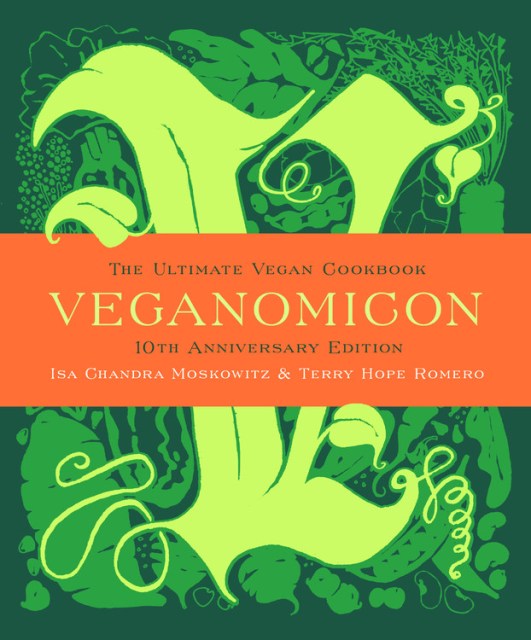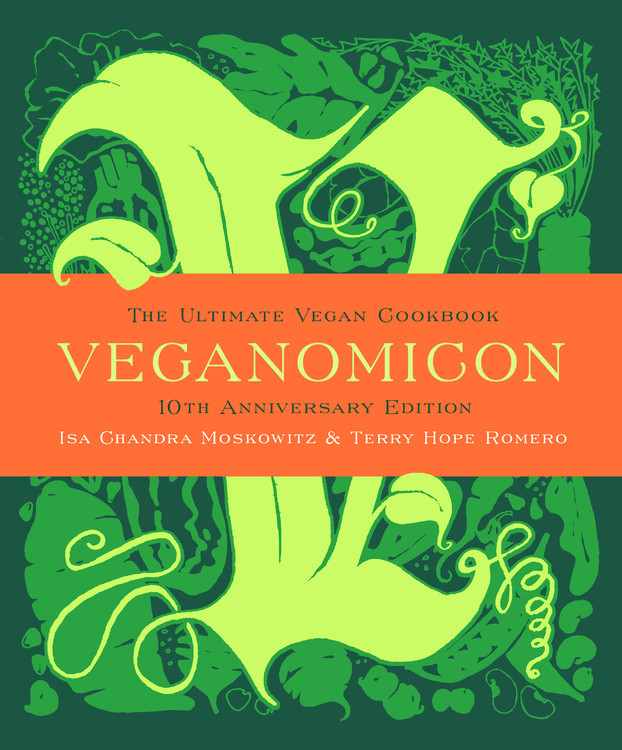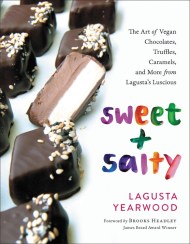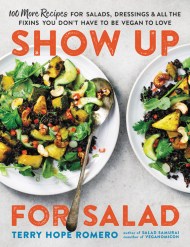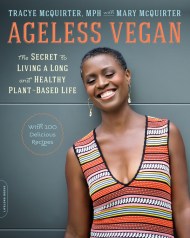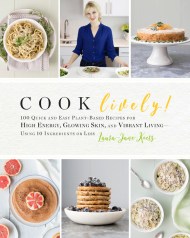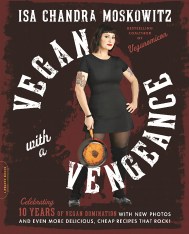Promotion
Use code MOM24 for 20% off site wide + free shipping over $45
Veganomicon (10th Anniversary Edition)
The Ultimate Vegan Cookbook
Contributors
Formats and Prices
Price
$35.00Price
$44.00 CADFormat
Format:
- Hardcover (Special Edition) $35.00 $44.00 CAD
- ebook (Special Edition) $23.99 $30.99 CAD
This item is a preorder. Your payment method will be charged immediately, and the product is expected to ship on or around September 26, 2017. This date is subject to change due to shipping delays beyond our control.
Also available from:
Vegan powerhouses Isa Chandra Moskowitz and Terry Romero update their beloved cookbook with 25 new dishes, revisions throughout for more than 250 recipes, stunning color photos, and tips for making your kitchen a vegan paradise.
Who knew vegetables could taste so good? Vegan powerhouses Isa Chandra Moskowitz and Terry Romero bring a brand new edition of this beloved vegan cookbook to celebrate its 10th anniversary. You’ll find 25 new dishes and updates throughout for more than 250 recipes (everything from basics to desserts), stunning color photos, and tips for making your kitchen a vegan paradise. All the recipes in Veganomicon have been thoroughly kitchen-tested to ensure user-friendliness and amazing results. Veganomicon also includes meals for all occasions and soy-free, gluten-free, and low-fat options, plus quick recipes that make dinner a snap.
Who knew vegetables could taste so good? Vegan powerhouses Isa Chandra Moskowitz and Terry Romero bring a brand new edition of this beloved vegan cookbook to celebrate its 10th anniversary. You’ll find 25 new dishes and updates throughout for more than 250 recipes (everything from basics to desserts), stunning color photos, and tips for making your kitchen a vegan paradise. All the recipes in Veganomicon have been thoroughly kitchen-tested to ensure user-friendliness and amazing results. Veganomicon also includes meals for all occasions and soy-free, gluten-free, and low-fat options, plus quick recipes that make dinner a snap.
Genre:
-
"Spending time with [Moskowitz's] cheerfully politicized book feels like hanging out with Grace Paley. She and her cooking partner, Terry Hope Romero, are as crude and funny when kibitzing as they are subtle and intuitive when putting together vegan dishes that are full of non-soggy adult tastes. Do look for an excellent roasted fennel and hazelnut salad, bok choy cooked with crispy shallots and sesame seeds, hot and sour soup with wood ears and napa cabbage and a porcini-wild rice soup they say is 'perfect for serving your yuppie friends.'"-New York Times Book Review
-
"Exuberant and unapologetic, Moskowitz and Romero's recipes don't skimp on fat or flavor, and the eclectic collection of dishes is a testament to the authors' sincere love of cooking and culinary exploration."-Saveur
-
"[T]his slam-bang effort from vegan chefs Moskowitz and Romero is thorough and robust, making admirable use of every fruit and vegetable under the sun."-Publishers Weekly
-
"Full of recipes for which even a carnivore would give up a night of meat."-San Francisco Chronicle
-
"It's no shocker that the very same urban chefs who had you inhaling vegan butter-cream frosting during your free time have crafted the next revolution in neo-vegan cuisine."-Philadelphia City Paper
-
"Veganomicon not only offers tons of mouth-watering ways to put 'veg' back into your vegan diet with actual produce, but also tutorials that gave me confidence to start improvising on my own."-Bust
-
"Veganomicon is user-friendly, packed with tips and instructions for a wide range of cooking techniques."-New York Sun
-
"The Betty Crocker's Cookbook of the vegan world. It's one more step in the quest to prove that vegan food really doesn't taste like cardboard when you know what you're doing."-Bitch
-
"Seriously good with broad appeal."-Washington Post
-
"These two very real and very sassy food-obsessed women have put together a cookbook that you wish your mom cooked from when you were growing up. The recipes are seriously delicious and, for the most part, uncomplicated."Buffalo Spree
-
"Vegan powerhouses Isa Chandra Moskowitz and Terry Hope Romero team up to present a host of delectable vegan recipes...The modernized revamp of this beloved cookbook is out of this world."VegNews
-
"It's basically the writers' bible of vegan cooking, and it includes recipes for all sorts of dishes along with tips on creating a vegan pantry at home, among other things."Omaha World-Herald
-
"Who knew vegetables could taste so good? Vegan powerhouses Isa Chandra Moskowitz and Terry Romero bring a brand new edition of this beloved vegan cookbook to celebrate its 10th anniversary. You'll find 25 new dishes and updates throughout for more than 250 recipes (everything from basics to desserts), stunning color photos, and tips for making your kitchen a vegan paradise. All the recipes in Veganomicon have been thoroughly kitchen-tested to ensure user-friendliness and amazing results. Veganomicon also includes meals for all occasions and soy-free, gluten-free, and low-fat options, plus quick recipes that make dinner a snap."City Book Review
-
"An impressive hardback, with a chatty style and comprehensive contents."Portland Press Herald
-
"Isa Chandra Moskowitz and Terry Hope Romero call it 'The Ultimate Vegan Cookbook,' and it really is."Washington Post
-
"Along with delicious recipes for soups, casseroles, one-pot meals, breads and muffins, snacks and salads, and cookies and desserts, Veganomicon includes a host of instructions for grilling, baking and shopping...The authors love their food and want to share it."Milwaukee Shepherd-Express
-
"336 pages of basic culinary tips, general how-to, and animal-product-free recipes for all occasions that take anyone from "Wait, where will I get my protein?" to "Hey, check out this pumpkin baked ziti with carmelized onions and sage crumb topping I made you and by the way did you know that pumpkin seeds contain almost as much protein as turkey breast?" in no time...Whether you're thinking about jumping on board the SS Vegan for better health, a better environment, or in order to reduce your overall jerkiness to animals-or you're simply vegan-curious-this is without a doubt the best place to start and very likely to become your go-to in the kitchen."Whalebone, ?Essential Vegan Cookbooks?
- On Sale
- Sep 26, 2017
- Page Count
- 432 pages
- Publisher
- Da Capo Lifelong Books
- ISBN-13
- 9780738218991
Newsletter Signup
By clicking ‘Sign Up,’ I acknowledge that I have read and agree to Hachette Book Group’s Privacy Policy and Terms of Use
